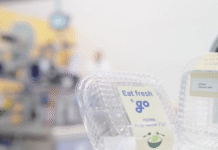While it is generally known that mainstream Chinese cuisine and diets are not big on milk or milk products, a recent research study seems to indicate that this may be changing at least as far as cheese. With the popularity of cheese increasing and Chinese consumers viewing it as a nutritious food that can also be used as a snack item, the cheese market is anticipated to grow swiftly in China, says data and analytics company GlobalData.
According to GlobalData, the value of China’s cheese market is expected to grow from US$1.06 billion in 2020 to US$ 1.96 billion in 2025.* Lihong Zheng, innovation researcher at GlobalData, comments, “Dairy products are considered a healthy and essential food in China. GlobalData’s research shows that 32% of consumers in China are trying to increase their dairy intake as much as possible, and 47% of consumers are trying to consume a moderate amount.”*2
“In China, cheese products that are targeted at children are the most popular segment. One of the reasons for this is that the younger generation, those born in the 80s and 90s, are becoming parents and look for more nutritious offerings for their children.”
Cheese is a natural source of calcium and protein, and these two nutrients are viewed as essential for a child’s height and muscle growth. Most cheese products aimed at children come with high calcium and protein tagging and in a stick-shape or even on a stick (like an ice lolly) for easier child-friendly consumption.
In the past, the biggest cheese consumers in China were ethnic minorities, such as Mongolians, and the biggest cheese producers are found in inner Mongolia. People used to travel to inner Mongolia and buy cheese as souvenirs to take back home. However, with the growth of the cheese market in China, cheese products have become part of the norm and are no longer just souvenirs from travel.
Zheng concludes, “China’s average cheese consumption is still relatively low, especially compared to neighboring countries like Japan and South Korea. According to the Organisation for Economic Co-operation and Development,*3 Japan’s cheese consumption per capita is 2.35 kilograms, while China lags at 0.30 kilogram. GlobalData’s research suggests similar findings, in which Japan has historically led in cheese consumption in terms of value. However, the new study seems to indicate that in the past few years, demand has skyrocketed in China, with the forecast growth expected to quickly accelerate,* largely due to the possible health benefits associated with cheese consumption.”
*- Data from GlobalData: GlobalData’s Global Market Data: Segment Insights – China
*2- Data from 2020 Market Pulse Consumer Survey Results of 900 nationally representative China consumers – CHINA, published on 1 September 2020
*3- Data from OECD: DAIRY – OECD-FAO Agricultural Outlook 2018-2027
IndiFoodBev — authentic, impactful and influential
An English-language food and beverage processing and packaging industry B2B platform in print and web, IndiFoodBev is in its third year of publication. It is said that the Indian food and beverage industries represent approximately US$ 900 billion in revenues which implies more than 20% of the country’s GDP. Eliminating the wastage on the farmside can help to deliver more protein to a higher number of the population apart from generating sizable exports. The savings in soil, seeds, water, fertilizer, energy and ultimately food and nutrition could be the most immense contribution that country is poised to make to the moderation of climate change.
To improve your marketing and grow sales to the food and beverage processing and packaging industry, talk to us. Our research and consulting company IppStar [www.ippstar.org] can assess your potential and addressable markets in light of the competition. We can discuss marketing, communication, and sales strategies for market entry and growth.
Suppliers and service providers with a strategy and budget for targeted marketing can discuss using our hybrid print, web, video, and social media channels to create brand recognition linked to market relevance. Our technical writers are ready to meet you and your customers for content.
The second largest producer of fruit and vegetables in the world is continuously expanding processing capacities and delivery systems with appropriate innovative technologies. We cover product and consumer trends, nutrition, processing, research, equipment and packaging from farm to thali. Get our 2025 media kit and recalibrate your role in this dynamic market. Enhance your visibility and relevance to existing markets and turn potential customers into conversations. Ask for a sample copy of our bi-monthly in print or our weekly IndiFoodBev eZine each Wednesday.
For editorial info@ippgroup.in — for advertisement ads1@ippgroup.in and for subscriptions subscription@ippgroup.in
Naresh Khanna – 10 February 2025
Subscribe Now











